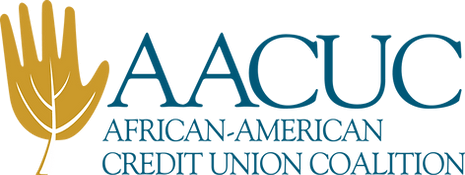Supporting and incorporating equity in a more cautious environment

Supporting and incorporating equity in a more cautious environment

After a powerful racial reckoning that took place following the murder of George Floyd in 2020, we have recently been seeing a retrenchment when it comes to addressing the topic of racial equity. For example, some organizations have ceased using the terms diversity, equity, and inclusion (DEI) to describe their financial inclusion efforts or activities. Others have updated their websites or changed the names of specific programs in order to reduce real or perceived risk.
Despite significant headwinds, there remains a strong desire by organizations to continue fighting for equity. Supporting the 8th Cooperative Principle of Diversity, Equity, and Inclusion in the credit union movement may look different these days. Support may be less front and center, more subtle, and less racially explicit. What I hear across the country at national conferences from practitioners—including at the African-American Credit Union Coalition (AACUC) conference this summer—is that people ARE continuing their commitment to change albeit in more nuanced or sometimes even covert ways. In his closing remarks at the end of the AACUC conference, the legendary Maurice Smith shared that history has shown this type of push and pull; backlash is not a new phenomenon in the fight for social and economic justice. Our ability to continue in the face of adversity is important, and I’m here to share that there are resources out there that can help.
My perspective on this comes from working for the past year and a half at an organization called ThirdSpace Action Lab. ThirdSpace was commissioned by Robert Wood Johnson Foundation in 2022 to conduct research on anti-racist community development. The research reports and related resources are housed on The People’s Practice platform. I’d like to share some of what we heard in the research and use it to help inform those who want to continue supporting and incorporating equity in their work.
Our research showed that there is a distinction between status quo (i.e., business as usual) community development and anti-racist community development even if you don’t use those terms. Practitioners who were committed to racial equity expressed feeling that there was something missing or that their organizations could do more. The practitioners often didn’t have the language to describe what was missing. With reflection on existing internal and external processes and engagement, however, you can begin to see what additional levers you can pull to achieve a more equity-centered organization.
Here are a few questions that illuminate what a more inclusive or anti-racist organization may consider:
Internal processes and engagement
- Would your staff describe decision-making at your institution using the words top-down, inaccessible, or bureaucratic?
- Does your organization prioritize speed in decision-making? Can longer time periods be considered to get more employee or member feedback and buy-in before decisions are made?
- Does your organization emphasize advanced degrees or certifications (vs. lived experience and future training) when hiring or promoting staff members?
- Is leadership development targeted toward those who already have technical expertise versus those who have yet to gain technical skills?
- Are you centering research inquiries around hard data sets and metrics, or are you engaging staff or members in what is researched, how it is measured, and how results are shared?
External processes and engagement
- Who is involved in your member advisory groups? Do these groups reflect your membership or the demographics of the community in which you serve?
- Are there any known barriers or challenges to participating that you have sought to reduce or eliminate (e.g., time of meetings, childcare, hybrid format, etc.)?
- Do you take into account federal, state, or local history or policies in your member outreach discussions? For example, were there any significant events (e.g., redlining, disinvestment, gentrification, urban renewal, etc.) that impact how certain neighborhoods or historically marginalized populations are engaging, or not engaging, with your institution?
- Are members of certain communities unbanked or underbanked in your geographic area? Are you moving into financial deserts or steering clear of them? Do your services primarily meet the needs of higher income individuals or the underserved?
- Are standard operating procedures valued over customized solutions (e.g., meeting members where they are)? Are there any barriers to entry that can be re-evaluated or replaced (e.g., use of credit scores, application fees, minimum deposits, waiting periods, etc.)?
- Does your financing or investment strategy focus on the most “de-risked” projects or most straightforward capital stacks? Are there opportunities to support collective wealth-building or local resident priorities?
- Are harmful narratives being circulated within your organization about certain community groups? Note: Eleven dominant narratives are highlighted in our High Level Research Findings brief to shed light on harmful narratives expressed within community development.
It is possible to fight for equity at your credit union if you are—as AACUC calls us to be—“Bold, Mindful, and Brave.” You can choose to operate from a position that is bottom-up, inside-out, adaptive, flexible, holistic, contextualized, and culturally relevant. We at ThirdSpace Action Lab want to support you in this journey with research, tools, and inspiration through The People’s Practice. The African-American Credit Union Coalition is also an excellent resource for credit union professionals of all backgrounds who have an ongoing commitment to building a better future. There are AACUC regional chapters you can join in addition to a host of educational and professional development programs offered by AACUC (e.g., Commitment to Change Conversation Series, Cross-Cultural Exchange, BoardReady, etc.). Together we can all build the world we want to see even in tough times. It just takes practice and perseverance.
Original article here.
Additional Info
Related Links : https://www.cuinsight.com/supporting-and-incorporating-equity-in-a-more-cautious-environment/
Source : CUInsight.com
